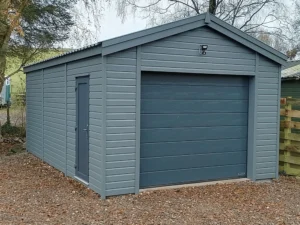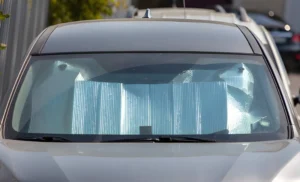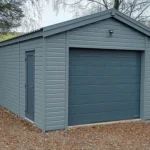Selecting the right golf shorts men wear throughout the year requires understanding how different seasons affect fabric needs, styling choices, and performance requirements. Most golfers make the mistake of buying one type of shorts and trying to wear them year-round, which leads to discomfort and poor performance in varying conditions. After playing golf in different climates and seasons for over a decade, I’ve learned that strategic seasonal planning creates a versatile wardrobe that keeps you comfortable and looking professional regardless of weather conditions. The key is understanding what works best in each season and building a rotation that covers all your playing needs.
Spring Golf Shorts Selection
Spring weather creates unique challenges for golf shorts selection because temperatures fluctuate dramatically throughout the day. Morning rounds might start in the 50s and reach the 70s by afternoon. You need shorts that provide versatility without requiring mid-round wardrobe changes.
Mid-weight fabrics work best for spring conditions. They provide enough warmth for cooler morning starts while remaining comfortable as temperatures rise. Look for fabrics that breathe well but aren’t so lightweight that they feel inadequate in cooler conditions.
Longer inseam lengths, around 9-10 inches, provide extra coverage for variable spring temperatures. These longer cuts also work better when you need to add layers like lightweight pullover sweaters or windbreakers for morning tee times.
Darker colors absorb more heat from early morning sun, helping you stay warmer during cool starts. Navy, charcoal, and darker khaki colors work particularly well in spring conditions. These colors also hide morning dew stains better than lighter alternatives.
Water resistance becomes crucial in spring when morning dew is heaviest and spring showers are common. Look for shorts with DWR (Durable Water Repellent) coatings that repel moisture without feeling heavy or uncomfortable.
Summer Heat Performance Shorts
Summer golf requires shorts specifically designed for hot, humid conditions. Lightweight fabrics with maximum breathability become essential for comfort and performance during the hottest months. The wrong fabric choice can make summer rounds miserable and affect your concentration.
Moisture-wicking technology works overtime during summer play. Look for shorts with advanced polyester blends that pull sweat away from your skin and allow rapid evaporation. This technology makes a noticeable difference during long summer rounds or multiple consecutive days of play.
Lighter colors reflect heat better than dark colors, keeping you cooler during hot summer rounds. White, light gray, sky blue, and pale khaki work well for summer play. However, consider your course’s dress code – some clubs restrict very light colors.
UV protection becomes important during summer when you’re exposed to intense sun for 4-5 hours per round. Many premium golf shorts include UPF ratings of 30-50+, providing significant protection for your legs during extended sun exposure.
Shorter inseams, around 7-8 inches, provide better air circulation and cooling during hot weather. The reduced fabric coverage allows more airflow while still maintaining appropriate coverage for most golf settings.
Four-way stretch fabric becomes even more important in summer when your body naturally swells slightly in heat. Shorts that fit perfectly in cool conditions might feel restrictive during hot summer rounds if they lack adequate stretch.
Fall Transition Strategies
Fall golf presents similar challenges to spring – variable temperatures that can change significantly during a round. However, fall typically involves cooling temperatures rather than warming, requiring different strategic approaches to shorts selection.
Layering compatibility becomes crucial for fall golf. Your shorts need to work well with various upper body layers like long-sleeve shirts, vests, and light sweaters. Choose cuts and colors that complement these additional layers.
Medium to darker colors work better as temperatures cool. They provide better visual balance with heavier upper body layers and often coordinate better with fall color palettes in clothing and course surroundings.
Fabric weight should be substantial enough to feel appropriate with cooler temperatures and heavier upper layers. Lightweight summer shorts can look disproportionate when paired with fall layering pieces.
Wind resistance becomes more important as fall weather patterns change. Shorts with slightly tighter weaves or wind-resistant treatments help maintain comfort during breezy fall rounds.
Winter Climate Considerations
While many northern golfers put away their shorts during winter, southern and southwestern golfers continue wearing shorts year-round. Winter shorts need to handle cooler temperatures while maintaining the performance features needed for good golf.
Heavier fabric weights provide warmth without bulk. Look for substantial polyester blends that feel more like lightweight pants than typical shorts. These fabrics provide better insulation while maintaining the flexibility needed for golf swings.
Longer inseam lengths work better in winter conditions, providing additional coverage and warmth. Ten-inch inseams offer maximum coverage while still maintaining shorts proportions.
Darker colors work best in winter conditions, providing visual weight that balances cooler weather layers. Black, navy, charcoal, and deep brown create appropriate seasonal looks while potentially providing slight warming benefits.
Thermal regulation features help maintain comfort in variable winter conditions. Some premium shorts include thermal technology that provides warmth without adding bulk or restricting movement.
Building a Seasonal Rotation
A well-planned golf shorts rotation includes 2-3 pairs for each season you play, allowing for washing and alternating wear. This rotation ensures you always have appropriate shorts available regardless of conditions.
Versatile transitional pieces work across multiple seasons, maximizing your wardrobe investment. Mid-weight fabrics in neutral colors can often work for both spring and fall conditions.
Color coordination across seasons helps create cohesive looks with different seasonal layering pieces. Choose shorts colors that work with the majority of your seasonal golf shirts and sweaters.
Quality investment pieces last multiple seasons and often perform better over time than cheaper alternatives. Consider spending more on shorts you’ll wear frequently during your primary playing season.
Storage considerations become important when rotating seasonal golf clothing. Proper storage prevents damage and maintains performance features in fabrics during off-seasons.
Climate-Specific Recommendations
Desert climates require maximum sun protection and cooling features. Light colors, UV protection, and advanced moisture-wicking become essential for comfort and health during desert golf.
Humid climates demand superior moisture management and quick-drying capabilities. Fabrics that stay dry and comfortable in high humidity make significant differences in comfort and appearance.
Coastal climates often require wind resistance and quick-drying capabilities due to ocean breezes and higher humidity. Shorts that handle these conditions while maintaining professional appearance work best.
Mountain climates need versatility for rapid elevation and temperature changes. Layering compatibility and transitional fabrics work better than climate-specific choices.
Also Read-Online Lead Generation Techniques for Professional Services










